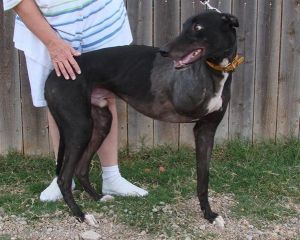Grey2Kusa – 09-28-11
Top Recipients of Dog Racing Subsidies Contribute Thousands to Tomblin Campaign
Posted: 28 Sep 2011 12:59 PM PDT

With only days left in the race for West Virginia governor, greyhound breeders are simultaneously
defending candidate Earl Ray Tomblin, while at the same time trying to
distance themselves from him.
For example, this morning the Charleston Daily Mail published a letter from Sam Burdette, the president of the West Virginia Greyhound Owners and Breeders Association. In his letter, Burdette defends Tomblin from what he says are “false and negative campaign accusations,” but then claims that Tomblin hasn’t actually helped greyhound breeders:
“Also, we have occasion to go to the Legislature on bills relating to the greyhound industry. We have not known Earl Ray to insert his influence into legislative action relating to the business.”
What greyhound breeders are saying in public, however, contrasts sharply with what they are saying in private. On May 15, greyhound breeder Dean Miner urged other breeders across the country to support Tomblin and contribute to his campaign. He urged breeders to send checks directly to him, and said that he would bundle the checks together and they would be “hand delivered to Governor Tomblin.” He further added:
“It’s been my experience hand delivering goes a long, long way.”
Miner’s message, which was posted on an internet site used by the dog racing industry, made it clear that Tomblin’s election would benefit greyhound breeders like himself:
“You can’t do better in this lifetime, but to have a Governor who has family that owns greyhounds, a kennel and a farm. If you don’t get involved now then I don’t know what to say.”
Miner’s investment in Tomblin has the potential to pay huge dividends. In return for his maximum donation of $1,000, which he gave to Tomblin on July 14, 2011, he can try to ensure that the subsidies he receives under the Greyhound Development Fund continue. In 2010, Miner received $225,986.11 in greyhound subsidies, placing him ninth in total subsidy dollars.
Dean Miner is not the only top recipient of greyhound subsidies who apparently thinks Tomblin is a good bet. Half of the top ten recipients of greyhound subsidies in 2010 have donated to the Tomblin campaign this year:
- The fifth largest recipient of greyhound subsidies, Harvey Maupin Jr., gave the maximum $1,000 to the Tomblin campaign in two separate contributions dated May 10 and August 18. His wife Loretta also gave the maximum $1,000 in two contributions, also dated May 10 and August 18. In 2010, Maupin received $248,773.83 in greyhound subsidies.
- The seventh largest recipient of greyhound subsidies, Rondis Cavender, gave $500 to the Tomblin campaign in two contributions on May 6 and June 1. In 2010, Cavender received $237,117.64 in greyhound subsidies.
Finally, it is worth noting that the author of today’s letter, Sam Burdette, gave the Tomblin campaign $100 on June 14.
Next Tuesday, we’ll find out if the bet greyhound breeders have made in West Virginia will pay off. I’m hopeful that Mountain State voters will instead make a humane choice and opt for Bill Maloney for Governor.






Skechers Shoes Promoting Greyhound Racing – Why?
Earlier this month, a TV crew was seen filming a commercial for Skechers shoes at Tucson Greyhound Park (TGP). Please join us in asking the company not to promote the cruelty of dog racing by using this footage.
Read More